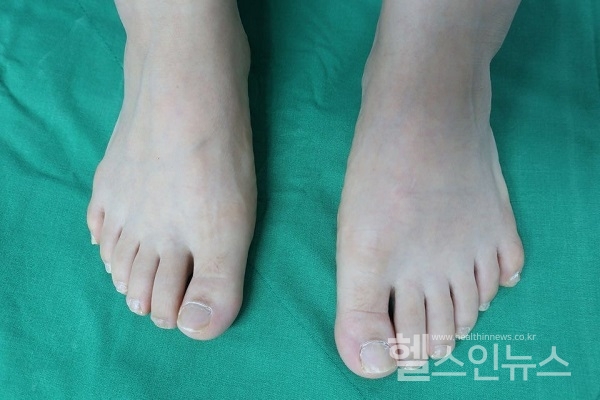Director of Seoul Yonsei Hospital [Cho Snag-hyun]
![DirectorofSeoulYonseiHospital[ChoSnag-hyun]](https://cgeimage.commutil.kr/phpwas/restmb_allidxmake.php?pp=002&idx=3&simg=202007081402240013645kpm_00.jpg&nmt=48)
The patient, who visited the hospital, is a woman in her late 40s, and at first glance, it is hard to tell if she has polydactylism. She has 'six toes' that are neat on both feet. She probably felt very uncomfortable when she had to take off her shoes or socks because she was conscious of other people's eyes. In general, treatment of polydactylism is recommended for surgery in infancy before the age of one, when finger or toe functions are developed. Over time, tissues and organs are likely to regenerate voluntarily and become complex operations.

The treatment for polydactylism varies depending on which part of the finger and toe you have developed. Usually, joint construction is rare and various joint construction can lead to triphalanageal Thumb, brachydactyly. There may also be triglycerides in the growth plate.
Sometimes it is simply removed, but it can lead to complex reconstructive surgery. Surgery involves cutting the rest, leaving the fingers or toes with good functions. Depending on its form, complicated surgical methods for bones, tendons, ligaments, etc. may be required. Therefore, it is recommended to undergo surgery by a specialist at a plastic surgery hospital or an orthopedic hospital where reconstructive surgery is possible.
The patient in the picture seems to have visited the hospital with complicated reconstruction procedures in mind. It became an example of good results from simple control. I proceeded with full consideration of the functional parts of the bone and the postoperative scar. She was discharged from hospital after three days of inpatient treatment after surgery.
ChoSnag-hyun 기자
webmaster@healthinnews.co.kr





